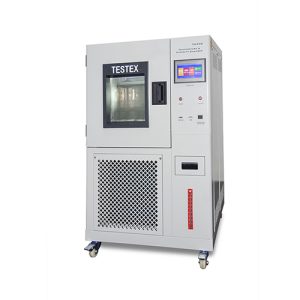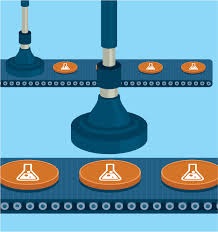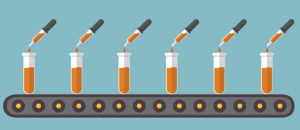What is water vapour permeability? The water vapour permeability test measures how well fabrics let…
How to Choose a Temperature Humidity Environmental Chamber?
Temperature humidity environmental chamber, also called climatic chamber, is a common environmental simulation system and device in laboratories and factories. Environmental chambers are used to test the performance stability of materials or products in various environments by simulating natural environments such as high temperature, low temperature, humidity, and dryness. So how to choose the right temperature humidity environmental chamber?

Table of Contents
★ The selection principles of temperature humidity environment chamber
The selection of temperature humidity environment chamber should follow the following four basic principles.
1 Reproducibility of environmental conditions

It is a very difficult to accomplish thing that reproduce the environmental conditions of the natural world completely and accurately in the test chamber. However, within a certain tolerance range, people can simulate the external environmental conditions experienced by engineering products in the process of use, storage, transportation, etc. in an approximate manner. Only in this way can we ensure the reproducibility of environmental conditions in the environmental test.
2 Repeatability of environmental conditions
 An environmental test chamber may be used for multiple tests for the same type of product, and the same product being tested may also be tested in different environmental test chambers. In order to ensure the comparability of test results obtained from the same product under the same test environment conditions, the environmental conditions provided by the environmental test chamber is bound to required repeatability.
An environmental test chamber may be used for multiple tests for the same type of product, and the same product being tested may also be tested in different environmental test chambers. In order to ensure the comparability of test results obtained from the same product under the same test environment conditions, the environmental conditions provided by the environmental test chamber is bound to required repeatability.
3 Controllability of environmental parameters
 The environmental conditions provided by any environmental test chamber must be observable and controllable, which is not only to make the environmental parameters are limited to a certain tolerance range to ensure the reproducibility and repeatability of the test conditions required, but also from the safety of the product test is necessary to prevent the environmental conditions out of control resulting in product damage and bringing unnecessary losses. At present, a variety of test specifications require that the accuracy of parameter testing should not be less than one-third of the error allowed by the test conditions.
The environmental conditions provided by any environmental test chamber must be observable and controllable, which is not only to make the environmental parameters are limited to a certain tolerance range to ensure the reproducibility and repeatability of the test conditions required, but also from the safety of the product test is necessary to prevent the environmental conditions out of control resulting in product damage and bringing unnecessary losses. At present, a variety of test specifications require that the accuracy of parameter testing should not be less than one-third of the error allowed by the test conditions.
4 Security and reliability of test instrument

Environmental testing, especially reliability testing with long test cycle, in test process, the test personnel often have to check around the site test work, so the requirements of environmental testing equipment must have a safe operation, easy to operate, reliable use, long working life and other characteristics to ensure the normal conduct of the test itself. Test equipment of various protection, alarm measures and safety chain devices should be perfect and reliable to ensure the safety and reliability of the test personnel, the product under test and the test equipment itself.
★ The selection method of temperature humidity environmental chamber
We just know the four basic principles of choosing an environmental test chamber, so what should we start from? Here I will specify how to choose the environmental test chamber from several aspects such as volume, temperature, humidity and control methods.
1 The choice of volume
Put the product (components, assemblies, parts or the whole machine) to be tested into the climate environment test chamber for testing, in order to ensure that the product under test around to meet the environmental test conditions specified in the test specifications, the following points should be followed between the dimensions of the climatic chamber and the dimensions of the product being tested.
1.1 The volume of the product to be tested shall not exceed the effective working space of the test chamber (20 ~ 35)% (recommended 20%).
1.2 The ratio of the windward area of the tested product to the total area of the test chamber studio is not greater than (35 ~ 50)% (recommended 35%).
1.3 The distance between the outer contour surface of the tested product and the inner wall of the test chamber is at least 100~150mm, (150mm is recommended).
To sum up the above three provisions, the working chamber volume of the climate test chamber should be at least 3 to 5 times the volume of the tested product. The main reason for this provision is because the test piece placed in the box crowded smooth channel, narrowing the channel will lead to an increase in airflow, the uniformity of environmental parameters in the test chamber will have an impact, the larger the space occupied by the test piece, the more serious this impact.
According to the principle of heat conduction, the temperature of the airflow near the inner wall of the chamber is usually 2℃~3℃ difference with the center of the flow field, in high or low temperature, even may reach 5℃, the greater the difference between the test temperature and the external atmospheric environment, the greater the above temperature difference. Therefore, the space within the distance (100 ~ 150mm) from the inner wall of the chamber is not available space. Measured test data show that the temperature difference between the windward side and the leeward side of the flow field can reach 3℃~8℃, and in serious cases can be as large as 10℃ or more. Therefore, it is necessary to try to meet the two requirements of 1.1 and 1.2 to ensure the uniformity of the environmental parameters around the product under test.
For example, in the relevant standards for environmental tests involving temperature have such provisions: the air flow rate around the test specimen should not exceed 1.7m/s in the test chamber, in order to prevent the test specimen and the surrounding environment to produce unrealistic heat transfer. If the test is not restricted to increase the volume of the test piece or windward cross-sectional area, the actual test airflow wind speed will increase to exceed the maximum wind speed specified in the test standards, the validity of the test results will be questioned.
2 The choice of temperature range
At present, the temperature test chamber range is generally -40℃~+130℃, there are some instruments low temperature can reach -70℃, high temperature can reach +150℃ or even +180℃. For -40℃~+130℃ temperature range, it has been able to meet the majority of military, civilian products temperature test needs, unless there is a special need, such as installation location near the engine and other heat sources outside the product, not to blindly raise the upper temperature limit.
The higher the upper temperature limit, the greater the temperature difference between inside and outside the chamber, the less uniformity of the internal flow field of the chamber, the smaller the available studio volume. On the other hand, the higher the upper temperature value, the higher the heat resistance requirement of the insulation material (such as glass wool, etc.) in the chamber wall sandwich, the higher the requirement of the chamber sealing, so that the production cost of the box increases.
3 The choice of humidity range
The humidity index given by the environmental test chamber is mostly 20%~98% or 30%~98%. If the temperature humidity test chamber without dehumidification system, the humidity range of 60%~98%, this type of test chamber can only do high humidity test.
Achieve high temperature, high humidity only need to spray water vapor or atomized water droplets into the air of the chamber for humidification. Low temperature and low humidity is relatively difficult to control, because the absolute moisture content at this time is very low, sometimes much lower than the absolute moisture content in the atmosphere, it is necessary to dehumidify the air flowing inside the chamber so that the air becomes dry.
Relative humidity and temperature is directly related, for the same absolute moisture content, the higher the temperature, the smaller the relative humidity. For example, the absolute moisture content of 5g/Kg (refers to 1kg of dry air contains 5g of water vapor). When the temperature is 29℃, when the relative humidity of 20%, the temperature is 6℃, the relative humidity of 90%, when the temperature drops below 4℃, the relative humidity of more than 100%, in the inner chamber will appear condensation phenomenon.
4 The choice of control mode
Temperature humidity test chamber has two kinds: constant test chamber and alternating test chamber.
Ordinary high and low temperature test chamber generally refers to the constant high and low temperature test chamber, its control mode: set a target temperature, the test chamber has the ability to automatically thermostat to the target temperature point. Constant temperature humidity test chamber control mode is similar, set a target temperature and humidity point, the test chamber has the ability to automatically thermostat to the target temperature and humidity point.
High and low temperature alternating test chamber can set one or more programs of high and low temperature change and cycle, the test chamber has the ability to complete the test process according to the preset program, and can be within the range of the maximum temperature rise, cooling rate capacity, precise control of temperature rise, cooling rate, that is, you can control the temperature rise, cooling rate according to the slope of the set curve. Of course, the alternating test chamber have the function of constant test chamber, but the alternating test chamber manufacturing costs are higher, because the alternating test chamber need to be configured with curve automatic recording device, program control instrument, but also to solve the test chamber in the case of high temperature in the work room to open the refrigerator and other issues. Therefore, the alternating test chamber is more difficult to control than the constant test chamber, the price is also higher, we should take the actual test needs as the starting point, choose the constant test chamber or alternating test chamber.
5 The fluctuation of temperature and humidity
In order to more correctly simulate the actual environmental conditions suffered by the product in nature, in the environmental test must ensure that the surrounding of the tested product in the same temperature environment conditions, for this reason, the temperature gradient and temperature fluctuations in the test chamber must be limited. Temperature fluctuation is a relatively easy to achieve parameters, all environmental test equipment manufacturers produce most of the actual temperature fluctuations in the test chamber can be controlled within the range of ±0.3℃.
The relative humidity deviation should be -3%~+2% in the environmental test chamber. To meet the requirements of humidity control accuracy, temperature control accuracy is high in the environmental test chamber, temperature fluctuations are generally less than ±1℃, otherwise it is difficult to achieve the requirements of humidity control accuracy.
The above is how to choose the environmental test chamber, if there is anything you don’t understand in the process of buying environmental test chamber, you can contact our sales staff, they will make a more detailed introduction for you.




This Post Has 0 Comments